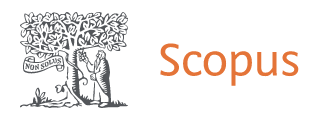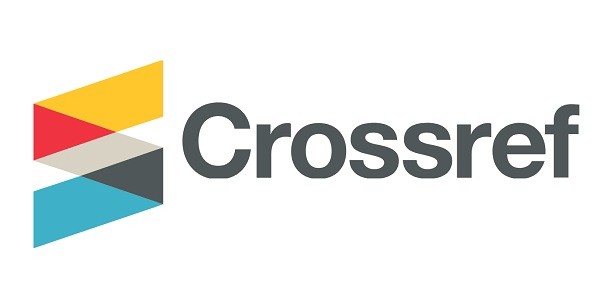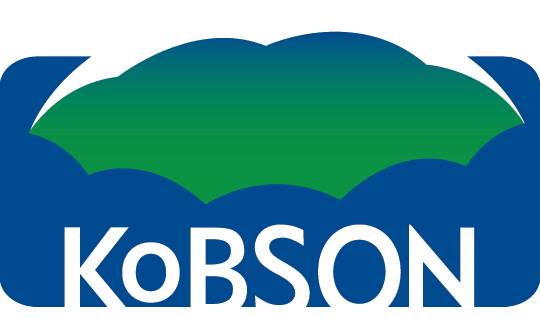DOI: 10.5937/jaes0-37543
This is an open access article distributed under the CC BY 4.0

Volume 20 article 987 pages: 808-820
Self-employment in the Russian Federation is a special tax regime; tax on personal income is a simplified form of
entrepreneurship. The self-employed are often associated with freelancers. The exponential growth of information
increases uncertainty, and the development of digitalization levels out uncertainty. This work analyses the factors
influencing the digitalization development of self-employment as an integral indicator that can affect the
sustainability of self-employment. The main method used is a topological method based on the polymerase chain
reaction method, as well as the model based on fuzzy sets theory – Mamdani fuzzy inference algorithms. The data
for the study were collected through a survey posted on Google Forms. The respondents were experts in the selfemployment sector. Eight people participated in the survey (4 – self-employed; 4 – university professors). The selfemployed comprised the following areas: developer – 1; service worker – 1; online marketer – 1; musician, event
host – 1. Further calculations were performed in Mathlab. According to the study results, the level of factors in the
development of self-employed digitalization is 0.502, which corresponds to the third interval of the five-level
classifier and has growth potential.
The study was supported by a grant from the Russian Science Foundation (project No. 20-78-00100).
1. Nishikawa, B.T., & Orsato, R.J. (2021). Professional services in the age of platforms: Towards an analytical framework. Technological Forecasting and Social Change, 173, 121131. https://doi.org/10.1016/j.techfore.2021.121131
2. Wagner, G., Prester, J., & Paré, G. (2021). Exploring the boundaries and processes of digital platforms for knowledge work: A review of information systems research. The Journal of Strategic Information Systems, 30(4), 101694. https://doi.org/10.1016/j.jsis.2021.101694
3. Itani, O.S., Kalra, A., & Riley, J. (2022). Complementary effects of CRM and social media on customer co-creation and sales performance in B2B firms: The role of salesperson self-determination needs. Information Management, 59(3), 103621. https://doi.org/10.1016/j.im.2022.103621
4. Korableva, O. N., Gorelov, N., &Kalimullina, O. (2020a). Contemporary issues of intellectual capital: Bibliographic analysis doi:10.1007/978-3-030-48021-9_51
5. Stubb, C., & Colliander, J. (2019). “This is not sponsored content” – The effects of impartiality disclosure and e-commerce landing pages on consumer responses to social media influencer posts. Computers in Human Behavior, 98, 210–222. https://doi.org/10.1016/j.chb.2019.04.024
6. Tong, T., Xu, X., Yan, N., & Xu, J. (2022). Impact of different platform promotions on online sales and conversion rate: The role of business model and product line length. Decision Support Systems, 156, 113746. https://doi.org/10.1016/j.dss.2022.113746
7. Nikitin, Y., & Safonov, D. (2021). Determination of the Cost of Logistic Operational and Warehouse Works When Forming The Initial Price Of The Contract. Krasnoyarsk Science, 10(2), 7-24. https://doi.org/10.12731/2070-7568-2021-10-2-7-24
8. Upadhyay, U.D., Jovel, I.J., McCuaig, K.D., & Cartwright, A.F. (2020). Using Google Ads to recruit and retain a cohort considering abortion in the United States. Contraception: X, 2, 100017. https://doi.org/10.1016/j.conx.2019.100017
9. Akarsu, M. (2021). Alteration of Consumption Habits in Turkey Over Time. Research in Social Sciences and Technology, 6(3), 122-134. https://doi.org/10.46303/ressat.2021.33
10. Tran, T.P. (2017). Personalized ads on Facebook: An effective marketing tool for online marketers. Journal of Retailing and Consumer Services, 39, 230–242. https://doi.org/10.1016/j.jretconser.2017.06.010
11. Banerjee, S., & Bhardwaj, P. (2019). Aligning marketing and sales in multi-channel marketing: Compensation design for online lead generation and offline sales conversion. Journal of Business Research, 105, 293–305. https://doi.org/10.1016/j.jbusres.2019.06.016
12. Shakirova, D., Sultanova, G., Tomashova, A., Ivanova, K., Imasheva, S., & Ivanova, Y. (2021). Analysis of the Conflict Environment Within the Team on the Example of the Staff of the Medical Institution. Krasnoyarsk Science, 10(2), 84-98. https://doi.org/10.12731/2070-7568-2021-10-2-84-98
13. De Haan, E., Wiesel, T., & Pauwels, K. (2016). The effectiveness of different forms of online advertising for purchase conversion in a multiple-channel attribution framework. International Journal of Research in Marketing, 33(3), 491–507. https://doi.org/10.1016/j.ijresmar.2015.12.001
14. Tarman, B., & Kilinc, E. (2022). Predicting high school students’ global civic engagement: A multiple regression analysis. Journal of Social Studies Research, doi:10.1016/j.jssr.2022.02.001
15. Vo-Thanh, T., Zaman, M., Hasan, R., Rather, R.A., Lombardi, R., & Secundo, G. (2021). How a mobile app can become a catalyst for sustainable social business: The case of Too Good To Go. Technological Forecasting and Social Change, 171, 120962. https://doi.org/10.1016/j.techfore.2021.120962
16. Gibson, J.J. (1977). The theory of affordances. In R. Shaw, & J. Bransford (Eds.), Perceiving, Acting, and Knowing: Toward an Ecological Psychology (pp. 67–82). Hillsdale, NJ: Erlbaum.
17. Pogosyan, V. (2021). Updating social theory: Redefinition of modernization. Wisdom, 19(3), 182-193. doi:10.24234/WISDOM.V19I3.486
18. Farhan, M.S., Abed, A.H., & Abd Ellatif, M. (2018). A systematic review for the determination and classification of the CRM critical success factors supporting with their metrics. Future Computing and Informatics Journal, 3(2), 398–416. https://doi.org/10.1016/j.fcij.2018.11.003
19. Guerola-Navarro, V., Oltra-Badenes, R., Gil-Gomez, H., & Fernández, A.I. (2021). Customer relationship management (CRM) and Innovation: A qualitative comparative analysis (QCA) in the search for improvements on the firm performance in the winery sector. Technological Forecasting and Social Change, 169, 120838. https://doi.org/10.1016/j.techfore.2021.120838
20. Belousova, M., Aleshko, R., Zakieva, R., Karabasheva, M., Gorovoy, S., &Kozhemov, S. (2021). Development of equipment management system with monitoring of working characteristics of technological processes. Journal of Applied Engineering Science, 19(1), 186-192. doi:10.5937/jaes0-28855
21. Mustafin, A. (2015). Coupling-induced oscillations in two intrinsically quiescent populations. Communications in Nonlinear Science and Numerical Simulation, 29(1-3), 391-399. doi:10.1016/j.cnsns.2015.05.019
22. Dudukalov, E. V., Terenina, I. V., Perova, M. V., & Ushakov, D. (2021). Industry 4.0 readiness: The impact of digital transformation on supply chain performance. Paper presented at the E3S Web of Conferences, 244 doi:10.1051/e3sconf/202124408020
23. Demichev, I. (2021). Virtuality and Networking: About the Socio-Cultural Communities of the Information Age (Answer to M.G. Bresler’s Monograph ‘The Ontology of Network Existence’). Modern Studies of Social Issues, 13(2), 14-37. https://doi.org/10.12731/2077-1770-2021-13-2-14-37
24. Skillbox. (2020). 6 Free Website Builders: We Create Business Cards, Landing Pages, eCommerce. Retrieved April 13, 2022, from https://skillbox.ru/media/marketing/6_besplatnykh_konstruktorov_saytov/
25. Di Fatta, D., Patton, D., &Viglia, G. (2018). The determinants of conversion rates in SME e-commerce websites. Journal of Retailing and Consumer Services, 41, 161–168. https://doi.org/10.1016/j.jretconser.2017.12.008
26. Katz, E. (1974). Utilization of mass communication by the individual. In J.G. Blumler, & E. Katz (Eds.), The Uses of Mass Communications: Current Perspectives on Gratifications Research (pp. 19–32). Beverly Hills: Sage Publications.
27. Mejía-Trejo, J. (2021). COVID-19 ads on purchase intention of online consumer behavior as business innovation activity: A contribution to the uses and gratification theory. Electronic Commerce Research and Applications, 49, 101086. https://doi.org/10.1016/j.elerap.2021.101086
28. Moon, N.N., Talha, I.M., &Salehin, I. (2021). An advanced intelligence system in customer online shopping behavior and satisfaction analysis. Current Research in Behavioral Sciences, 2, 100051. https://doi.org/10.1016/j.crbeha.2021.100051
29. Rahman, P. A. (2018). Analysis of stationary availability factor of two-level backbone computer networks with arbitrary topology. Journal of Physics: Conference Series, 1015(2).https://doi.org/10.1088/1742-6596/1015/2/022016
30. Kawaf, F., &Istanbulluoglu, D. (2019). Online fashion shopping paradox: The role of customer reviews and Facebook marketing. Journal of Retailing and Consumer Services, 48, 144–153. https://doi.org/10.1016/j.jretconser.2019.02.017
31. Saenko, N., Nyanga Gakosso, C., Mezhlumyan, N., Smirnov, A., &Rogulin, R. (2021). Analysis of approaches to the formation of economic mechanisms of supply chain management. Foresight, 23(5), 583-596. doi:10.1108/FS-10-2020-0111
32. Huang, R., & Ha, S. (2020). The effects of warmth-oriented and competence-oriented service recovery messages on observers on online platforms. Journal of Business Research, 121, 616–627. https://doi.org/10.1016/j.jbusres.2020.04.034
33. Luzon, Y., Pinchover, R., & Khmelnitsky, E. (2022). Dynamic budget allocation for social media advertising campaigns: optimization and learning. European Journal of Operational Research, 299(1), 223–234. https://doi.org/10.1016/j.ejor.2021.08.019
34. Mashiah, I. (2021). The relationship between public relations and journalists in WhatsApp technology. Public Relations Review, 47(5), 102117. https://doi.org/10.1016/j.pubrev.2021.102117
35. Rangaswamy, A., Moch, N., Felten, C., van Bruggen, G., Wieringa, J. E., & Wirtz, J. (2020). The role of marketing in digital business platforms. Journal of Interactive Marketing, 51, 72–90. https://doi.org/10.1016/j.intmar.2020.04.006
36. Bashirzadeh, Y., Mai, R., & Faure, C. (2022). How rich is too rich? Visual design elements in digital marketing communications. International Journal of Research in Marketing, 39(1), 58–76. https://doi.org/10.1016/j.ijresmar.2021.06.008
37. Tupikovskaja-Omovie, Z., & Tyler, D. (2021). Eye-tracking technology to audit google analytics: Analysing digital consumer shopping journey in fashion m-retail. International Journal of Information Management, 59, 102294. https://doi.org/10.1016/j.ijinfomgt.2020.102294
38. Tolstoy, D., Nordman, E.R., & Vu, U. (2021). The indirect effect of online marketing capabilities on the international performance of e-commerce SMEs. International Business Review, 31(3), 101946. https://doi.org/10.1016/j.ibusrev.2021.101946
49. Varadarajan, R., Welden, R.B., Arunachalam, S., Haenlein, M., & Gupta, S. (2021). Digital product innovations for the greater good and digital marketing innovations in communications and channels: Evolution, emerging issues, and future research directions. International Journal of Research in Marketing. https://doi.org/10.1016/j.ijresmar.2021.09.002
40. Korableva, O. N., Mityakova, V. N., &Kalimullina, O. V. (2020b). Designing a decision support system for predicting innovation activity. Paper presented at the ICEIS 2020 - Proceedings of the 22nd International Conference on Enterprise Information Systems, 1 619-625
41. Pedersen, C.L., & Ritter, T. (2022). Updating the theory of industrial marketing: Industrial marketing as a Bayesian process of belief-updating. Industrial Marketing Management, 102, 403-420. https://doi.org/10.1016/j.indmarman.2022.02.008
42. Nikulin, A. N., Dolzhikov, I. S., Klimova, I. V., & Smirnov, Y. G. (2021a). Assessment of the effectiveness and efficiency of the occupational health and safety management system at a mining enterprise. Bezopasnost' Truda v Promyshlennosti, 2021(1), 66-72. doi:10.24000/0409-2961-2021-1-66-72
43. Nikulin, A. N., Dolzhikov, I. S., Stepanova, L. V., & Golod, V. A. (2021b). Assessment of noise impact on coal mine workers including way to/from workplace. [Оцінкашумовоговпливунапрацівниківвугільнихшахт з урахуваннямпроходженнянаробочемісцетаназад] NaukovyiVisnykNatsionalnohoHirnychohoUniversytetu, (2), 151-155. doi:10.33271/nvngu/2021-2/151
44. Du, W.D., & Mao, J.Y. (2018). Developing and maintaining clients’ trust through institutional mechanisms in online service markets for digital entrepreneurs: A process model. The Journal of Strategic Information Systems, 27(4), 296–310. https://doi.org/10.1016/j.jsis.2018.07.001
45. Strugar, V. (2022). The complexity of the modern DNO business - the importance of maintaining IMS and ICT support. Journal of Quality and System Engineering, vol. 1, no. 1, 1-10.
46. Gol, E.S., Stein, M.K., & Avital, M. (2019). Crowdwork platform governance toward organizational value creation. The Journal of Strategic Information Systems, 28(2), 175–195. https://doi.org/10.1016/j.jsis.2019.01.001
47. Shree, D., Singh, R.K., Paul, J., Hao, A., & Xu, S. (2021). Digital platforms for business-to-business markets: A systematic review and future research agenda. Journal of Business Research, 137, 354–365. https://doi.org/10.1016/j.jbusres.2021.08.031
48. Lindlacher, V. (2021). Low demand despite broad supply: Is high-speed Internet an infrastructure of general interest?. Information Economics and Policy, 56, 100924. https://doi.org/10.1016/j.infoecopol.2021.100924
49. Joo, Y.G., & Sohn, S.Y. (2008). Structural equation model for effective CRM of digital content industry. Expert Systems with Applications, 34(1), 63–71. https://doi.org/10.1016/j.eswa.2006.08.016
50. Selnes, F., &Gønhaug, K. (2000). Effects of supplier reliability and benevolence in business marketing. Journal of Business Research, 49(3), 259–271. https://doi.org/10.1016/S0148-2963(99)00017-X
51. Pernagallo, G., & Torrisi, B. (2020). A logit model to assess the transparency of Italian public administration websites. Government Information Quarterly, 37(4), 101519. https://doi.org/10.1016/j.giq.2020.101519
52. Akgun, A., Sezer, E.A., Nefeslioglu, H.A., Gokceoglu, C., & Pradhan, B. (2012). An easy-to-use MATLAB program (MamLand) for the assessment of landslide susceptibility using a Mamdani fuzzy algorithm. Computers & Geosciences, 38(1), 23–34. https://doi.org/10.1016/j.cageo.2011.04.012
53. Iancu, I. (2012). A Mamdani-type fuzzy logic controller. In E. Dadios (Ed.), Fuzzy Logic – Controls, Concepts, Theories and Applications (pp. 325–350). InTechOpen. https://doi.org/10.5772/36321
54. Mamdani, E.H., &Assilian, S. (1975). An experiment in linguistic synthesis with a fuzzy logic controller. International Journal of Man-Machine Studies, 7(1), 1–13. https://doi.org/10.1016/S0020-7373(75)80002-2
55. Stoianova, A., & Vasilyeva, N. (2022). Production process data as a tool for digital transformation of metallurgical companies doi:10.1007/978-3-030-81619-3_87
56. Movchan, I. B., Shaygallyamova, Z. I., Yakovleva, A. A., & Movchan, A. B. (2021). Increasing resolution of seismic hazard mapping on the example of the north of middle Russian highland. Applied Sciences (Switzerland), 11(11) doi:10.3390/app11115298
57. Movchan, I. B., & Yakovleva, A. A. (2019). Refined assessment of seismic microzonation with a priori data optimisation. Journal of Mining Institute, 236, 133-141. doi:10.31897/PMI.2019.2.133
58. Vasilyeva, N. V., Boikov, A. V., Erokhina, O. O., & Trifonov, A. Y. (2021a). Automated digitization of radial charts. Journal of Mining Institute, 247(1), 82-87. doi:10.31897/PMI.2021.1.9
59. Vasilyeva, N., Fedorova, E., & Kolesnikov, A. (2021b). Big data as a tool for building a predictive model of mill roll wear. Symmetry, 13(5) doi:10.3390/sym13050859
60. Herhausen, D., Miočević, D., Morgan, R.E., &Kleijnen, M.H. (2020). The digital marketing capabilities gap. Industrial Marketing Management, 90, 276–290. https://doi.org/10.1016/j.indmarman.2020.07.022
61. Delacroix, E., Parguel, B., & Benoit-Moreau, F. (2019). Digital subsistence entrepreneurs on Facebook. Technological Forecasting and Social Change, 146, 887–899. https://doi.org/10.1016/j.techfore.2018.06.018
62. Glushenko, S.A., &Doljenko, A.I. (2015). Fuzzy modeling of risks in investment and construction projects. Business Informatics, 1(31), 48–58.







